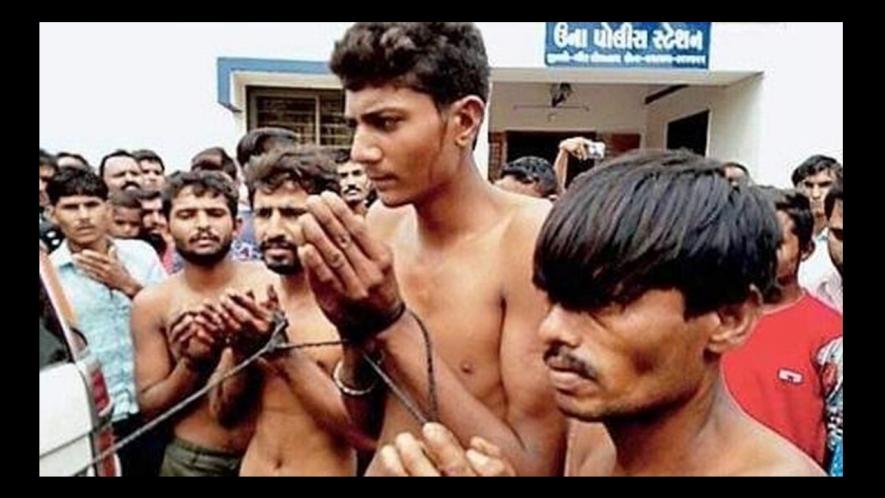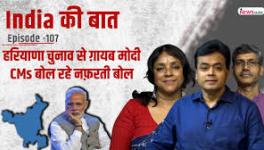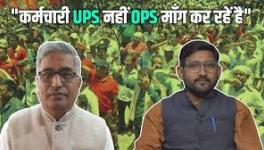Dalit Life in ‘Model’ Gujarat

On 15 August 2017, an NGO called Navsarjan Trust wanted to give a memorandum to Gujarat Chief Minister Vijay Rupani asking him to ensure that at least one village in the state is declared “untouchability free” by 2047. Rupani however had no time to meet them and the NGO members gave the memorandum and a huge national flag to the collector of Gandhinagar. Navsarjan had earlier done a survey in 14 districts of Gujarat on untouchability practices and found that 98 types of such practices were still existing. The survey was done during 2007 to 2010.
After an uninterrupted rule of 19 years by the Bharatiya Janata Party (BJP) in Gujarat, the condition of Dalit communities, which make up 7% of this industrialized and advanced state is still shacked in medieval customs. Dalits make up most of the agricultural labourers and small/marginal farmers in the state and are at the bottom rung of urban economies. And, they continue to face unspeakable brutality in daily lives.
The rate of incidence of crimes/atrocities against persons from Scheduled Castes has increased under the BJP regime in the state. While Gujarat was ranked at 8th among all the states and Union territories between years 2002 to 2005 in terms of incidence of crimes against dalits, the rank increased to 5th in 2016, according to recently released official data from National Crime Records Bureau. The rate of total cognizable crimes in this category has been recorded as 32.5% as against the all India average of 20.3%. This is a clear indicator of the continued oppression of dalits in the state.
In recent times, incidents of violence against dalit persons have been widely reported across the state. A few months back, incidents of violence against Dalit men by intolerant upper caste persons have been reported for just sporting moustaches of their choice. In protest, hundreds of Dalit men have taken up a social media campaign called as ‘Mr. Dalit’ through which they circulated pictures on Twitter and WhatsApp posed with them twirling their moustaches.
In July 2016, the state witnessed widespread protests from Dalit communities over an incident in Una where four young Dalit men were tied to a car and flogged by upper caste men, for alleged killing a cow while in fact they were just removing carcass of the cow which died of natural consequences. Remember: this is a traditional occupation for a large dalit sub-caste and in fact this work is essential for proper and safe disposal of cattle carcasses, which nobody else is willing to do. The incident, a phenomenon of cow vigilantism, caused immense anger and unlocked deep seated resentment among dalits. Cow-related violence by self styled ‘cow protectors’ have burgeoned after Prime Minister Narendra Modi came to power, with 68 incidents reported after May 2014.
Jignesh Mevani, lawyer and the convener of Rashtriya Dalit Adhikar Manch and Una Dalit Atyachar Ladhai Samiti, became the forerunner of the dalit Movement in Gujarat since the Una incident. Distribution of five acres of land to every landless Dalit has been his prime demand. Alongside, he has been waging a legal battle in Gujarat High Court for the proper implementation of Agriculture Land ceiling Act in the state which is intended to mainly benefit landless people of Scheduled Castes and Scheduled Tribes, with a rightful allotment of more than 56,873 acres of land. In the upcoming December Assembly elections, Mewani has filed his nomination as an independent candidate from Vadgam constituency in North Gujarat.
The new anger and pushback visible in all these developments does not augur well for BJP’s prospects in the elections. If it consolidates, it could provide another blow to the ruling party which is fighting with its back to the wall to retain power in Gujarat, often held up by it as a ‘model’ of development.
Get the latest reports & analysis with people's perspective on Protests, movements & deep analytical videos, discussions of the current affairs in your Telegram app. Subscribe to NewsClick's Telegram channel & get Real-Time updates on stories, as they get published on our website.
























